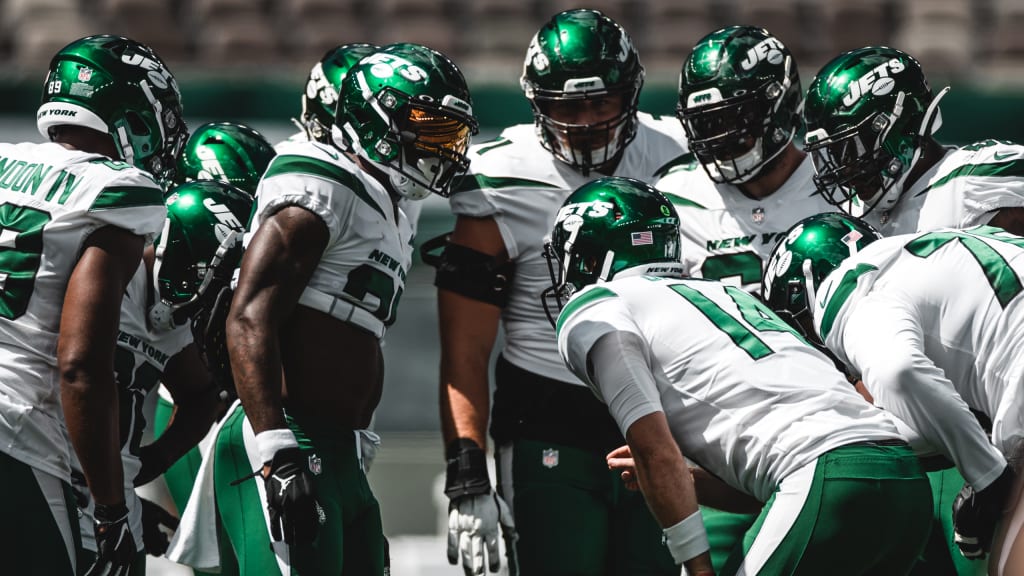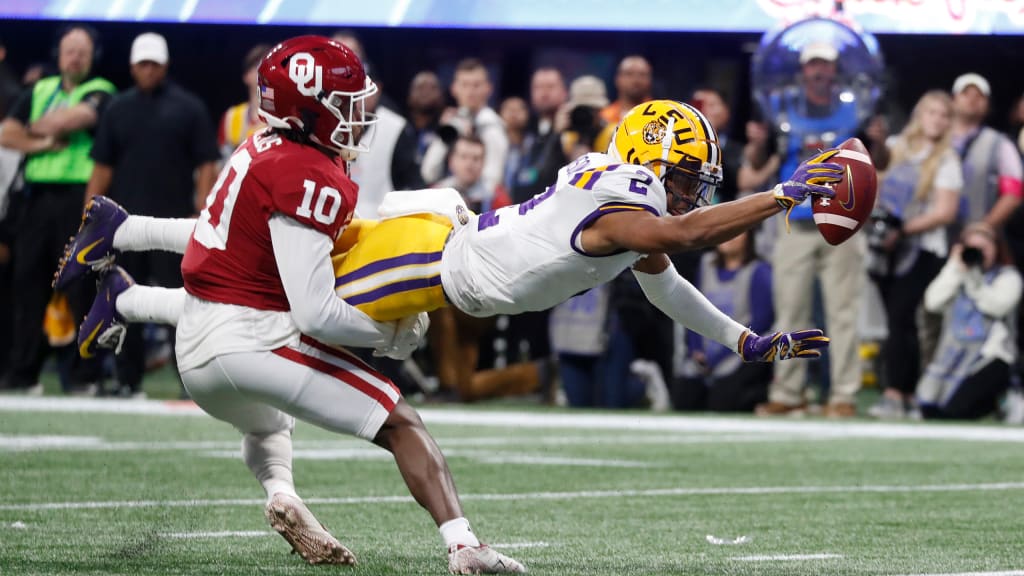Slot Receiver Techniques

CeeDee Lamb (Oklahoma) Lamb was a dominant receiver in 2019. According to Sports Info Solutions, Lamb ranked number one last season in yards per target (14.3), yard per route run (3.9), and yards after the catch per reception (11.2). Lamb also scored the fourth-most fantasy points of all wide receivers. Julian Edelman, the college quarterback at Kent State, would be the selection for Bill Belichick. But with the veteran slot receiver sidelined, the New England Patriots would turn to perhaps their best receiver this season, second-year wideout Jakobi Meyers. Before switching to wide receiver at N.C. State, Meyers was a quarterback.
A few years back, when I asked Doug Baldwin — one of the pre-eminent slot receivers of the last decade — about the importance of the position, he summed it up pretty well.
A limited number of slot receiver pass routes. No team used more than 5 different pass routes for slot receivers per game. An identifiable relationship between slot receiver and blocking assignment on running plays. Slot receivers operated on the 80-20 Rule. Over 80% of their routes were short. Less than 20% were deep. No slot receiver aligned. He’s first in slot targets, receptions, and yards. He’s also highly efficient from the slot, ranking first in slot target percentage and sixth in YPRR. Randall Cobb, GB. Randall Cobb might be the league’s best-known slot receiver, so it's no surprise to see him on this list. Cobb trails only Jordan Matthews in slot targets, receptions. Proper jamming technique requires the cornerback to use their legs, shoulder width apart. At the same time, the cornerback thrusts their arms forward into the receiver's chest to maximize power. When properly executed, a jam can knock a receiver off his feet. Jamming is only legal within five yards from the line of scrimmage.
“The slot receiver’s kind of the quarterback of the receivers,” he said in 2015. “More so because the slot receiver has more responsibilities in terms of reading coverages and different adjustments based on what coverages you’re seeing. It’s a lot more complicated. … You have to know a lot more. You have to stay within the confines and the framework of the offense — you have a lot of freedom because you have a little bit more space, but at the same time, your job is usually to get someone else open, or to get open on a crucial down where it’s one-on-one. You have to be versatile, and you have to understand how your route goes into the concept, based on the different coverages you can see.”
10. Adam Humphries 9. Golden Tate 8. Dante Pettis 7. Cooper Kupp 6. Jarvis Landry 5. Julian Edelman 4. Adam Thielen 3. JuJu Smith-Schuster 2. Antonio Brown 1. Tyreek Hill
It was an apt description in 2015, and though Baldwin has retired, the role of the slot receiver is quite similar to what it was then — and in 2019, one could argue that it’s even more important now. Three- and four-receiver sets are now the norm in the NFL, which means that teams will have double slot packages in which big and small receivers work together. And there’s no shame to the position — it’s not just for the Wes Welkers of the world anymore. Guys who can win outside just fine find themselves in the slot quite frequently, and you’ll find a few names that will rank highly on our upcoming list of outside receivers on this list as well.
Other Top 11 lists: Tight ends Centers Guards Offensive tackles Edge defenders Interior defensive linemen Linebackers Safeties Outside cornerbacks Slot defenders
So, here are the 11 best slot receivers in the NFL as we head into the 2019 season.

When watching Jacksonville’s 2018 passing offense, two things are abundantly clear — Jaguars receivers had one heck of a time with consistent production with Blake Bortles and Cody Kessler throwing the ball all over the place, and the acquisition of Nick Foles was a necessity to give those receivers any chance of improvement. Among those receivers, Westbrook may have the most potential, as he brought in 59 slot receptions on 83 targets for 646 yards and five touchdowns. Not bad for a second-year receiver who’s never had a lot of help from his quarterbacks at the NFL level.

Westbrook uses nimble feet and an impressive catch radius to make contested catches, and he has a good knack for getting open in zones. His drop rate was a problem at times, but with a credible quarterback at the helm, Westbrook could be a rising star in a big hurry.
Playing off in man coverage has its advantages, mainly in the form of deep safety help. It also has its weaknesses.
Some offensive systems, particularly spread offenses, look to complete short hitches and slants with high efficiency in order to attack the space created by the corner.
At some point, it becomes necessary to come up and press receivers.
Slot Receiver Techniques Software
Man coverage breeds familiarity, cultivates competition, provides accountability and – often enough – is forced by the offensive scheme being run against it.
Here’s how to teach it:

/cdn.vox-cdn.com/uploads/chorus_image/image/66362590/1200357573.jpg.0.jpg)
- Cornerback stance and alignment.Most defenders can line up 1½ yards off if a receiver, give or take based on a player’s ability. Start with a comfortable stance: feet under armpits and hands open in the strike position, playing with inside leverage. The outside foot splits the receiver’s legs to set the base. Eyes are burned on the bottom of the jersey numbers.
- Cornerback leverage.It is essential to not lose inside leverage. Use the sideline as an extra defender to force the quarterbacks to throw lower percentage, out-breaking routes. The reasoning is simple. With press coverage, there is no deep safety help. Corners are on an island. There is no cushion as there may be in off coverage. This means corners are susceptible to double moves, a technique players should spend a lot of time learning to defend.
- Cornerback footwork and hands.The hardest thing to get young defensive backs to understand when playing press coverage is to be patient. That could sound contradictory to defenders who want to be physical at the line of scrimmage, but it’s important to realize that the longer a receiver stays on or near the line, the longer it takes for a quarterback to release the football. This could result in a sack.
If a receiver wants to stay at the line by buzzing his feet and moving his hips, let him. Once the receiver declares a release – inside or outside – use the off-hand jam technique. For example, if aligned on the left side of the ball and a receiver releases to the outside, open the hips and get the right hand on the receiver’s left hip. I don’t believe in using the two-hand jam technique because young defensive backs often overextend leverage and lose their patience. This ensures a better stem by the receiver.
Here is a progression for the off-hand jam technique:
Slot Receiver Techniques Free
- Squeeze technique. Use this when a receiver releases inside in press technique, which can happen off a double move. In this circumstance, place the outside hand on the receiver’s hips and ride him down into the line of scrimmage. Be physical here because there is usually a window where linebackers are located and slow down the receiver even more.
- Wedge technique. This is used when a receiver releases outside in press technique. In this circumstance, place the inside hand on the receivers hips and wedge him toward the sideline. Using the sideline as an extra defender, create as little space as possible for the quarterback to throw the ball on a seam or fade route.
Once the hips are open, the same techniques used in off-man coverage are applied. The eyes are focused on the hip of the receiver to determine his break. As always, work to stay inside and on top of every route because there is no safety help. Because of the lack of safety help, don’t use a trail technique.
Safety technique in press coverage
Slot Receiver Techniques Without
When I use my signal for press coverage, all defensive backs are required to do so, including safeties.
Safeties have a different technique tied to press coverage, which we call a “catch” technique. Picture safeties catching receivers who drive off the line of scrimmage by not moving backward.
Often, they may be more mismatched, so allow them to play 5 yards off the slot receiver with inside leverage. Their feet are under their armpits, and their eyes are glued to the bottom of the numbers of a receiver.
Don’t expect them to make many tackles when they are in this technique. Defensive linemen and linebackers will handle the running game.
Slot Receiver Techniques Vs
The biggest coaching point to emphasize in catch technique is that there now is a cushion between the receiver and the defender. But 5 yards is the extent of that cushion.
In catch technique, safeties must not backpedal like a corner would in off coverage. Instead, teach the safeties to buzz their feet at the snap.
One the release is determined, the safety use the same in-phase techniques as the corner. If for whatever reason, the receiver gets on top of the safety, the safety can never look back for the ball. He does his best to get back in phase with the receiver by tracking his near hip.
So much of man coverage is about mentality – believing you are better than your opponent at the line of scrimmage. It’s always been my belief to infuse players with the confidence to play press coverage regardless of their initial ability.
Slot Receiver Drills
Playing press coverage is a fundamental that can be honed over time using the right techniques.
Mike Kuchar is co-founder and senior research manager at XandOLabs.com, a private research company specializing in coaching concepts and trends. Reach him at mike@xandolabs.com or follow him on Twitter @mikekkuchar.